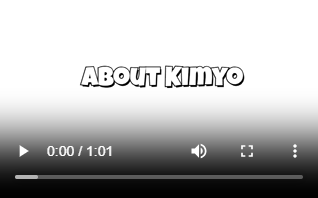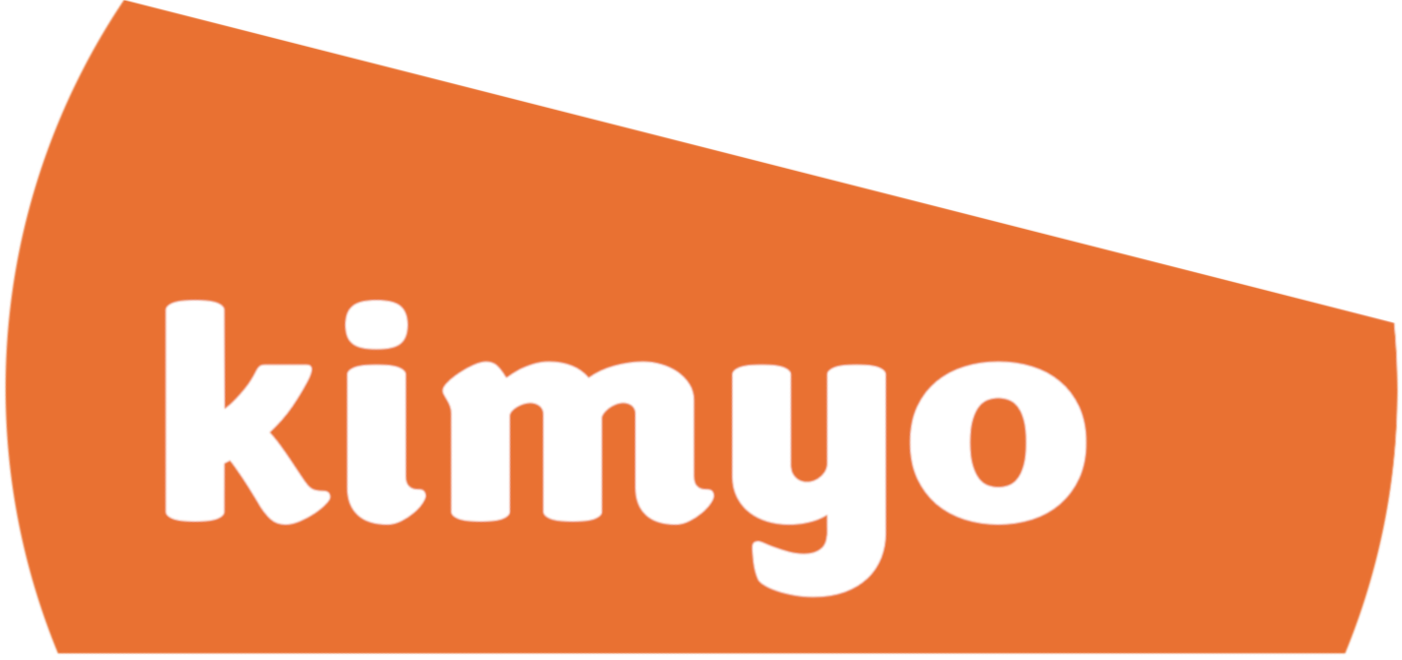For Educators
Make the most of kimyo with some readymade lesson plans.
These lesson plans help you use kimyo in your school to promote learning and engagement.
Feel free to use the plans as they are or adapt them to your needs.
If you’ve used kimyo in your lessons we’d love to hear about it! Get in touch at contact@kimyo.co.uk
Lesson Plans
Exploring an Item
- Describing an Item they’ve picked.
- Comparing it to similar Items.
- Thinking about what they know and would like to know.
National curriculum objectives
- History - ask and answer questions, identify different ways in which the past is represented (Key Stage 1)
- History - devise historically valid questions about change, cause, similarity and difference, and significance; note connections, contrasts and trends over time; construct informed responses that involve thoughtful selection and organisation of relevant historical information (Key Stage 2)
Word Bank
- Thinking of words and phrases to desribe an Item.
- Using synonyms.
- Using a word bank to write about the Item or Location.
National curriculum objectives
- English - how words are related by meaning as synonyms and antonyms (Year 6)
- English, Writing - organising paragraphs around a theme (Years 3 + 4)
- English, Writing - identifying the audience for and purpose of the writing, selecting the appropriate form and using other similar writing as models for their own; selecting appropriate grammar and vocabulary, understanding how such choices can change and enhance meaning (Year 5 + 6)
Unseen Object
- Describing an Item to a partner.
- Drawing an Item.
- Comparing the drawing to the Item.
National curriculum objectives
- English, Spoken Language - use spoken language to develop understanding through speculating, hypothesising, imagining and exploring ideas (Years 1 - 6)
- Mathematics, Geography - describe position, direction and movement (Years 1 - 6)
Curator
- Picking and grouping Items.
- Explaining the groups and naming them.
- Extension task - create an information booklet about your museum.
National curriculum objectives
- English, Writing - write for a range of real purposes and audiences (Years 3 + 4)
- English, Writing - identifying the audience for and purpose of the writing, selecting the appropriate form and using other similar writing as models for their own (Years 5 + 6)
- History - ask and answer questions, identify different ways in which the past is represented (Key Stage 1)
- History - devise historically valid questions about change, cause, similarity and difference, and significance; note connections, contrasts and trends over time; construct informed responses that involve thoughtful selection and organisation of relevant historical information (Key Stage 2)
Big 5
- Picking things you notice about an Item.
- Writing about inferences.
- Thinking about questions.
National curriculum objectives
- English - asking and answering questions (Years 2 - 6)
- English, Reading, Comprehension - drawing inferences and justifying inferences with evidence (Years 2 - 6)
- History - ask and answer questions (Key Stage 1)
- History - devise historically valid questions about change, cause, similarity and difference, and significance (Key Stage 2)
Missing Link
- Finding links and similarities in looks and use between Items.
National curriculum objectives
- History - identify similarities and differences between ways of life; understand some of the ways in which we find out about the past and identify different ways in which it is represented (Key Stage 1)
- History - note connections, contrasts and trends over time (Key Stage 2)
Item Write Up
- Creating a fact sheet about an Item.
- Writing about the Item in a genre of their choice.
National curriculum objectives
- English, Writing - organising writing around a theme (Years 3 + 4)
- English, Writing - identifying the audience for and purpose of the writing, selecting the appropriate form and using other similar writing as models for their own (Years 5 + 6)
Diamond 9
- Sorting Items on a scale.
- Giving reasons for their choices.
National curriculum objectives
- English, Spoken Language - articulate and justify answers, arguments and opinions (Years 1-6)
- History - construct informed responses that involve thoughtful selection and organisation of relevant historical information (Key Stage 2 )
Hot Seat
- An opportunity to put yourself in the shoes of one of the item users or owners and answer questions in role.
National curriculum objectives
- English, Spoken Language - learn to justify ideas with reasons; ask questions to check understanding; develop vocabulary and build knowledge; negotiate; evaluate and build on the ideas of others; and select the appropriate register for effective communication (Years 1-6)
- English, Spoken Language - participate in discussions, presentations, performances, role play, improvisations and debates (Years 1-6)
- English, Spoken Language - consider and evaluate different viewpoints, attending to and building on the contributions of others (Years 1-6)
- History - devise historically valid questions about change, cause, similarity and difference, and significance (Key Stage 2)
- History - understand how our knowledge of the past is constructed from a range of sources (Key Stage 2)
Portrait Puzzles
- Describing and discussing portraits
- Making their own portrait.
National curriculum objectives
- Art - evaluate and analyse creative works using the language of art, craft and design (Key Stage 1 and 2)
- Art - produce creative work, exploring their ideas and recording their experiences (Key Stage 1 and 2)
- Art - to use drawing, painting and sculpture to develop and share their ideas, experiences and imagination (Key Stage 1)
- Art - describe the differences and similarities between different practices and disciplines and make links to their own work. (Key Stage 1)
Say What You See Artwork
- Describing a piece of art.
- Drawing from memory.
- Comparing versions.
National curriculum objectives
- Art - evaluate and analyse creative works using the language of art, craft and design (Key Stage 1 and 2)
- Art - produce creative work, exploring their ideas and recording their experiences (Key Stage 1 and 2)
Picture Pondering
- Analysing a piece of art.
National curriculum objectives
- Art - evaluate and analyse creative works using the language of art, craft and design (Key Stage 1 and 2)
Odd One Out
- Selecting 4 items and thinking of a reason why each might be the Odd One Out.
- Asking the question to others.
National curriculum objectives
- English - asking and answering questions (Years 2 - 6)
- History - ask and answer questions (Key Stage 1)
- History - devise historically valid questions about change, cause, similarity and difference, and significance (Key Stage 2)
Time Travelling Mathematicians
- Select a Maths topic that you can explain using an item from the website.
National curriculum objectives
- Mathematics - reason mathematically by following a line of enquiry, conjecturing relationships and generalisations, and developing an argument, justification or proof using mathematical language (Years 1 - 6)
- Mathematics - apply mathematical knowledge to other subjects (Years 1 - 6)
Museum Maker
- Design a floor layout for your own museum, including measurements.
National curriculum objectives
- Mathematics - measure, compare, add and subtract lengths, measure the perimeter of simple 2-D shapes (Year 3 and 4)
- Mathematics - convert between different units of measure, measure and calculate the perimeter of a rectilinear figure, find the area of rectilinear shapes by counting squares (Year 4)
- Mathematics - convert between different units of metric measure, measure and calculate the perimeter of composite rectilinear shapes, calculate and compare the area of rectangles and estimate the area of irregular shapes (Years 5 and 6)
Label Maker
- Select an item and write a label describing it.
National curriculum objectives
- History - ask and answer questions, identify different ways in which the past is represented (Key Stage 1)
- History - devise historically valid questions about change, cause, similarity and difference, and significance; note connections, contrasts and trends over time; construct informed responses that involve thoughtful selection and organisation of relevant historical information (Key Stage 2)
- English, Writing - write for a range of real purposes and audiences (Years 3 + 4)
- English, Writing - identifying the audience for and purpose of the writing, selecting the appropriate form and using other similar writing as models for their own (Years 5 + 6)


